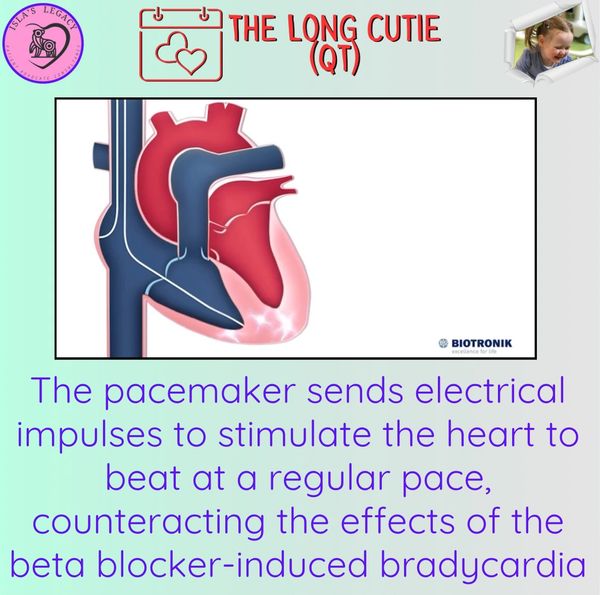Pacemakers

Pacemakers can be a therapy for Long QT patients, especially those who suffer badly from bradycardia as a result of beta blockers or who have pause dependent arrhythmias.

By artificially increasing the heart rhythm, the rate can be stopped from going too low, avoiding drastic changes.

Beta blockers do a great job at protecting you by preventing your heart rate from shooting up too high, like a brake on a rollercoaster. The downside is that that brake is constant, it can’t be turned on and off, so people suffer low heart rates in general. This can cause tiredness and fatigue - a pacemaker helps mitigate these side effects.

A pacemaker is also beneficial for anyone who can be triggered by pauses in their rhythm - remember those faulty doors on the Long QT 2 train? While the passengers are trying to get off the train, an unscheduled train arrives (an ectopic beat) before the platform has cleared. This means the next scheduled train has to wait a few extra seconds while the ghost train and the remaining passengers move.
The pacemaker ensures that no unscheduled trains can get to the station.

A pacemaker is also useful for Long QT 3 patients. Here, the schedule for trains leaves too long of a gap between them, which gives opportunity for unscheduled trains to arrive at the platform. A pacemaker ensures that the train departure schedule is kept tight and there’s a steady flow of passengers.

A higher lower rate means that when the heart rate suddenly increases, it doesn’t have so far to go. In our drummer analogy, that means the tempo doesn’t change too much or too drastically.

It also means that the heart rate doesn‘t drop too far after an increase and so the QT doesn’t stretch too drastically.
